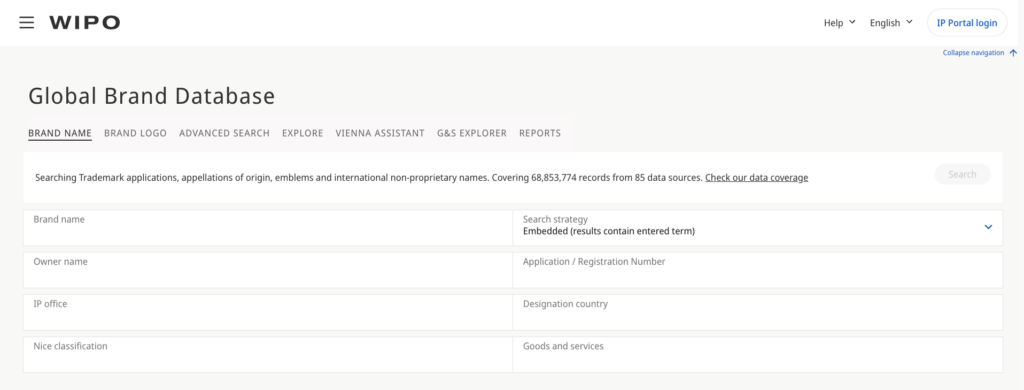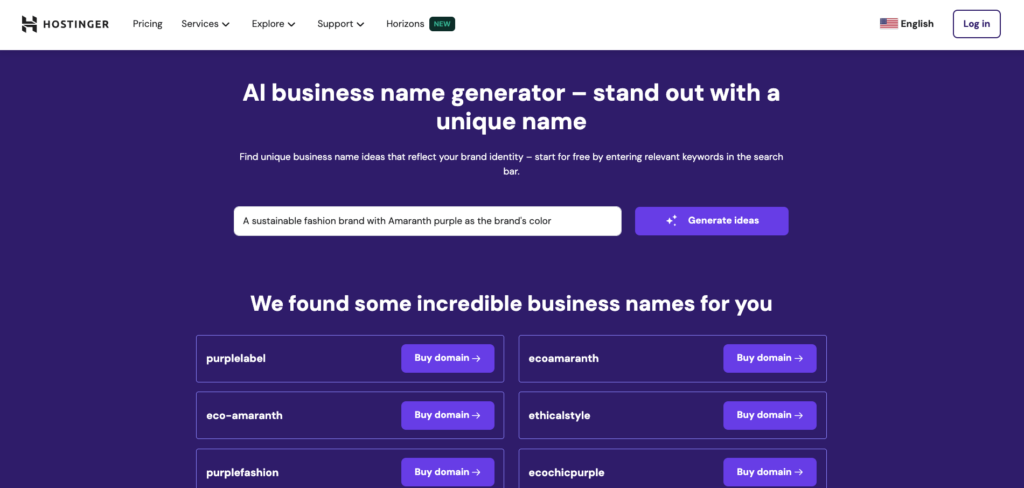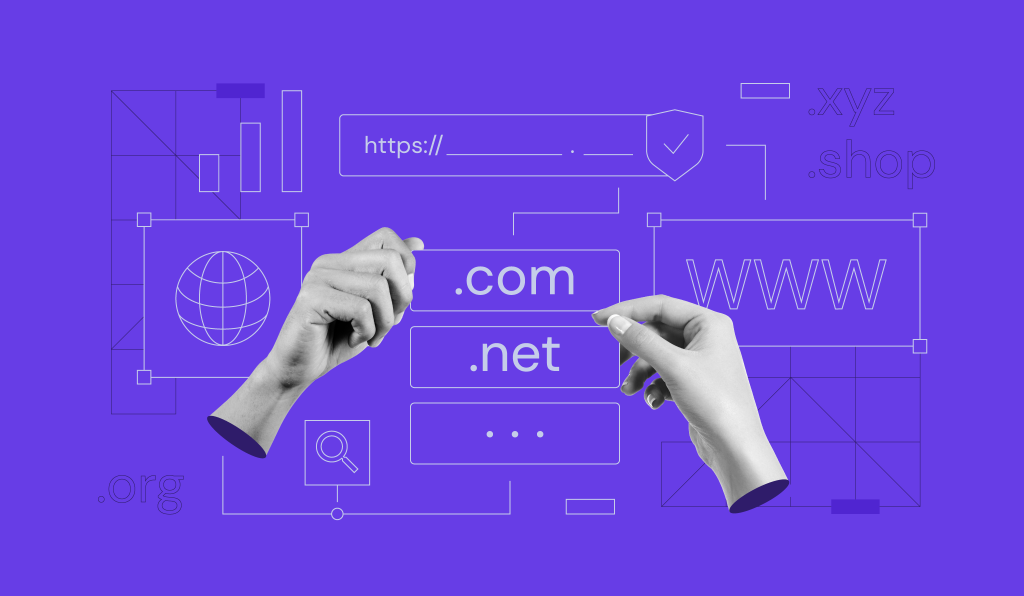How to check if a business name is taken

Did you know that Band-Aid is actually a brand name, not just a generic term for adhesive bandages? It goes to show that your business name can play a huge role in shaping how customers recognize and connect with your brand.
Before moving forward with your business name, it’s essential to make sure it is not already registered, trademarked, or in use. We’ll walk you through the steps to check business name availability, explain different types of protection, and share some tools to make the process easier.
Why checking business name availability matters
Choosing the right business name isn’t just about being creative ‒ it’s about building customer trust. A unique business name helps avoid confusion with other brands and lets your customers know exactly who they’re buying from.
In fact, a research found that 77% of consumers make purchasing decisions based on brand name. So, if your name is too similar to another business, you could end up losing a significant chunk of potential sales.
More importantly, using a business name that’s already registered can lead to serious legal consequences. If another company has trademarked the same name as yours, they may demand that you change it or even take legal action. This can be costly, time-consuming, and damaging to your brand’s reputation.
To protect your brand, it’s crucial to secure intellectual property rights through trademark registration. This step gives you exclusive rights to your business name, providing peace of mind knowing no one else can legally use it.
Ways to check if a business name is taken
Depending on where your business entity is located, there are certain checks you need to perform to make sure your business name is unique and legally protected.
Let’s explore different methods ‒ for businesses in the U.S. and worldwide ‒ to confirm your choice.
State-level checks
The first place to check if your business name is available is at the state level. In the U.S., each state has its own business registry, usually available through the Secretary of State’s website. Most states provide an online search tool to check name availability.
For example, California has the Business Name Search Tool, while New York offers the Corporation and Business Entity Database. Just enter your desired business name, and the system will tell you if it’s already taken.

Some states allow you to reserve your business name for a period. Check if this option is available to secure your name until you’re ready to register.
Federal-level checks for trademarks
While state-level checks are important for local protection, they don’t offer the same nationwide coverage as federal checks. If you plan to sell online or expand your brand beyond state borders, it’s crucial to check for federal trademarks.
In the U.S., business names can be trademarked federally through the United States Patent and Trademark Office (USPTO). Business owners in India can register trademarks through the Office of the Controller General of Patents, Designs, and Trademarks (CGPDTM), while those in the UK can apply via the Intellectual Property Office (IPO).

Like state business registries, most trademark registration sites offer advanced search tools to check name availability. For example, the IPO allows you to filter search results based on keywords, images, or both, making it easier to find exact matches.
International trademark checks
A trademark registered in one country doesn’t automatically protect your brand worldwide, so it’s important to perform international trademark checks before going global.
You can start with TMView, a tool managed by the European Union Intellectual Property Office (EUIPO) that lets you search trademarks across the European Union and non-EU systems.

Similarly, the World Intellectual Property Organization (WIPO) offers a Global Brand Database to search trademark data across multiple international sources at once.

Check whether the data sources of both tools cover your target regions. If not, check country-specific databases for your key markets, as some countries may have unique rules or local databases not fully covered by global tools.
Online presence checks
This check covers domain names, social media handles, and listings in business directories. While online handles don’t carry the same legal weight as trademarks, they’re essential for maintaining consistent branding across different platforms.
Start with a domain name as your website address. A domain that matches your brand name makes it easier for customers to find your site, which can drive more traffic and increase brand recognition.
Use a domain name search tool to check domain availability. At Hostinger, if your preferred domain is taken, our domain checker will suggest alternative extensions ‒ giving you more options to secure the right domain without breaking the bank.
Did you know?
Registering your business name as a federal trademark gives you an advantage in domain disputes. If someone tries to use your name or a similar one for a website, your trademark registration gives you priority in domain disputes with the Internet Corporation for Assigning Names and Numbers (ICANN).
Domain Name Checker
Instantly check domain name availability.
The same goes for social media handles. Tools like Namechk and Knowem let you check handle availability across multiple platforms at once, saving you time.

If your chosen handle is already taken, check if it’s trademarked. Otherwise, consider registering it as your trademark to secure your brand’s online presence.
Even if you’re not using all the platforms right away, it’s a good idea to claim your handles on major platforms to prevent others from taking them. You can always set the accounts to private or “coming soon” while you finalize your branding.
Finally, perform manual checks on business directories like Google Business Profile and Yelp. For better accuracy, include your city or region in the search to see whether there are any similar competitors in your area.

Types of business name protection
There are four ways to register your business name. Check out the table below for a quick comparison:
| Type | Scope of protection | Registration required | Cost |
| Entity name | Protects your name in the state where you’re registered | Yes, for establishing your business | $50-150 in the U.S., varies by state and entity type |
| Trademark | Protects your name or logo nationwide | Yes, with the USPTO or equivalent | $225-400+ per class for USPTO registration. |
| Doing Business As (DBA) | Protects your business name in your state or area | Yes, for day-to-day operations or marketing purposes | $10-100, varies by state and county |
| Domain name | Protects your online presence (website address) | Yes, through a domain registrar | $4.99-9.99/year or free for the first year at Hostinger |
Entity name
This is the official name you register with the government when you form your business. It appears on your legal documents, contracts, and tax forms. Every business, whether it’s a Limited Liability Company (LLC), corporation, or partnership, needs an entity name to establish its legal identity.
This name protects your business within the state or jurisdiction where it’s registered, making it essential for businesses that operate locally.
The protection lasts as long as your business remains active and you keep your registration current ‒ usually every one or three years, depending on the state. If you don’t renew, the protection will expire, allowing someone else to register a similar name.
Trademark
A trademark legally protects your business name, logo, or slogan, setting your brand apart. Nike’s name, the Swoosh logo, and “Just Do It” slogan, for example, are registered trademarks of Nike, Inc.
This protection gives you exclusive rights to use these elements in your industry, preventing others from using similar names or logos without your permission. It’s especially important if you plan to sell outside your of local area or online, since it covers your brand nationwide, unlike an entity name.
A trademark lasts for 10 years from the registration date and can be renewed indefinitely as long as you continue to use it. Just remember, you’ll need to maintain it by filing certain documents and paying fees to keep your registration active.
Doing Business As (DBA)
Also called a trade name or fictitious business name, it’s a name your business uses that’s different from its legal name. For example, if your LLC is registered as “Amaranth Enterprises, LLC,” you could use “Amaranth’s Boutique” as your DBA for your fashion boutique.
While it lacks the legal protection that a trademark offers, a DBA name lets you operate under a more recognizable or relevant name for your business. If you run multiple businesses or products under one entity, you can give each a unique name.
A DBA is registered at the state or local level, so it only applies in the area where you’ve registered the name. Keep in mind that it doesn’t prevent others from using the same name in different areas.
DBA registration is valid for five years and must be renewed to stay active.
Domain name
You can purchase a domain name from a registrar like Hostinger and connect it to your business website, which serves as its address. The process is straightforward ‒ check out our guide on how to buy a domain name for step-by-step instructions.
The minimum registration period for a domain is one year, but you can choose to register it for up to 10 years at a time. Remember to set up auto-renewal so you don’t forget to renew your domain.
Here’s the important part ‒ buying a domain name gives you exclusive rights to use that specific name and its top-level domain (TLD), but it only protects your website address. So, even if you own Amaranth.com, someone else could still register Amaranth.net or other similar extensions.
This is why many established businesses buy multiple domain extensions and redirect them to their main domain. For example, if you try accessing Google.net, it will automatically redirect you to Google.com. Doing so prevents lost traffic from misspellings and stops competitors from using similar domain names to steal customers.
What to do if your business name is taken
Did you know that approximately 4.7 million businesses are started every year in the U.S. alone? Combine that with the fact that there are 761 million domains registered today, it’s no surprise that finding an available business name can be challenging.
If the perfect name is taken, here are a few strategies to help you work around it.
Find alternatives
This is the easiest approach to take, especially if you want to keep the essence of your original corporate name.
Try making small changes to it, such as adding words, modifying spellings, or using synonyms. For example, if “Amaranth” is already taken, you could try adding niche-related nouns like “Amaranth Boutique,” “Amaranth Creations,” “The Amaranth Shop,” or go with a popular option like “Amaranth Co.”
You can also use tools like Hostinger’s business name generator to help with brainstorming. Ours is AI-powered, so all you need to do is describe your business, and the tool will suggest name ideas with available domain names ready to register ‒ saving you time on checking availability manually.

Explore the potential for coexistence
Check if the taken name is in a different industry, region, or context. If the name is not actively used or trademarked in your field, there may still be room for you to use it.
For example, if “Amaranth” is registered by a small business in a completely unrelated field or a different region, you might still be able to use the same name as long as there’s no likelihood of confusion. Just make sure the other business is not trademarked in your industry, as that could lead to legal issues.
To explore this option, conduct a detailed search to understand the name’s current usage. You could also reach out to the owner to negotiate the possibility of purchasing or sharing the name.
If the other business is open to it, a coexistence agreement could allow both businesses to use the same name in different contexts without legal conflict. This is a formal arrangement where both parties agree to coexist and use the same name, typically with restrictions on geographic or industry overlap.
Buy an existing trademark
This strategy involves negotiating with the current trademark holder to purchase their trademark rights.
Keep in mind that the price for a trademark can vary greatly depending on factors like the brand’s recognition, how actively it’s used, and its potential for your business.
Once the trademark is transferred, you’ll have exclusive rights to use the name in your industry and region with full legal protection.
Negotiate a licensing agreement
If you want to use a name that’s already trademarked but don’t want to buy it, negotiating a licensing agreement can be a great option.
This allows you to get permission from the trademark owner to use their name, logo, or brand for a set period, usually in exchange for a fee or royalties.
For example, if you want to use a well-known name in a related industry, the owner may allow you to use it under agreed terms.
Important! If you’re considering legal strategies, be sure to consult a trademark attorney. They can help navigate the legal complexities, ensure the agreement is valid, and protect your business interests.
Challenges when checking a business name
Choosing the right business name can come with a few challenges, even after you’ve done all the necessary checks.
First, there’s the risk of name similarity or trademark conflicts. Even if your name isn’t an exact match, it might still be too similar to an existing trademark, which could confuse people or result in legal issues down the road.
Another challenge is securing a matching domain name. Just because your business name is available doesn’t mean the domain you want is. Domain flippers who buy and resell domains at higher prices can make it harder to get the one you want.
Finally, there’s the risk of confusion or non-compliance in certain industries. Sectors like healthcare or finance have strict rules about business names to prevent misleading consumers.
How to avoid common business name mistakes
When choosing a business name, it’s easy to overlook some key details.
We’ve already discussed the importance of checking international trademark databases, performing a domain name check, and looking for similar names in your industry. These are the minimum steps you should take to protect your business’s future.
To avoid the most common mistakes when choosing a business name, here are more tips to consider:
- Focus on internationalization. Make sure your business name doesn’t have negative connotations or confusing meanings in other cultures or languages. For example, “Lay’s” in the U.S. became “Walkers” in the UK to avoid confusion with local slang.
- Plan for future growth. Choose a name that’s flexible enough to evolve with your business. For example, “Apple Computer Company” rebranded to “Apple Inc.” when it expanded beyond computers.
- Be mindful of pronunciation and spelling. Choose a name that’s easy to pronounce and spell in different languages. Doing so makes word-of-mouth marketing easier, especially in global markets.
- Test your name before finalizing. Try it out with a small group of people from different backgrounds or regions. It will help you see how it resonates and whether it has any unintended meanings.
Conclusion
Selling great products and services is crucial for success, but a unique and memorable business name is what keeps customers coming back. A strong name not only sets you apart but also protects your brand, making it essential to choose the right one.
Check business registries and trademark databases to verify your business name’s availability, and use a domain checker for its online presence. This is especially important if you’re planning to go international or launch a business website.
Once you’ve secured your business entity name, get ready to put it to work. We have a dedicated tutorial on the steps and due diligence of starting an online business that will help you get off to a strong start. While you’re at it, remember to secure a domain or two that matches your brand.
How to check if a business name is taken FAQ
How do I know if a name for a business is already taken?
It depends on the name’s purpose. For legal protection, search your region’s business registry and check trademark databases like the USPTO. For online presence, use a domain name checker or do a simple internet search to see if someone is already using it.
How do I know if a brand name has been taken?
For those in the U.S., searching the United States Patent and Trademark Office (USPTO) trademark database is the easiest way to check if your brand name is legally available. Just enter the name into their search tool to see if someone has trademarked it.
What does it cost to check if a business name is taken?
Searching business registries and trademark databases to check your business name’s availability is usually free, and the same goes for domain checkers. However, keep in mind that there will be fees if you decide to register a trademark or domain name later on.
All of the tutorial content on this website is subject to Hostinger's rigorous editorial standards and values.



